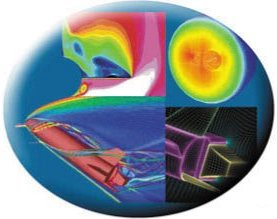
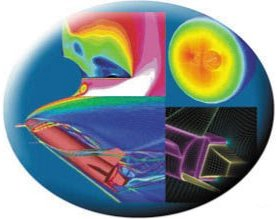
| NEWS | |
| March 2017
Revised and substantially updated version of the talk
The talk by Prof. J. H. Hauser on the current status on climate change, given on 17 January 2017, was substantially updated,
comprising now one hundred and twenty-three slides, in order to provide a most comprehensive discussion of the latest facts
on climate change, including also the evaluation of the recent data manipulations by leading NOAA scientists published in Science,
that became known in early February 2017. Most recent experimental findings from CERN, satellite measurements, and sea ice extent data
are also covered as well as the impact of the Sun (e.g. total solar irradiation, magnetic field, cosmic rays etc.) on the climate of
the Earth. In addition, the influence of the orbital location of the planets on the climate is discussed, too.
Predictions from climate models are still not considered (see my remarks from 17 January below).
| |
| January 2017
| |
| On 16 January 2017 Prof. J. H. Hauser presented the current status on
climate change On 16 January 2017 Prof. J. H. Hauser presented the current status on climate change based on the latest experimental data, including recent findings from CERN, satellite measurements, and the impact of the Sun on the Earth climate. Having worked on all kind of fluid dynamics models for more than three decades, I decided not to consider the results of climate models, because they are not reliable enough for the necessary exact quantitative predictions. The talk was aimed at students from various faculties, scientists, but also interested laymen as well as the local press. | |
| February 2016
Significance of the Detection of Gravitational Waves published by the LIGO Team in February 2016 | |
On 25 November 2015 our novel book entitled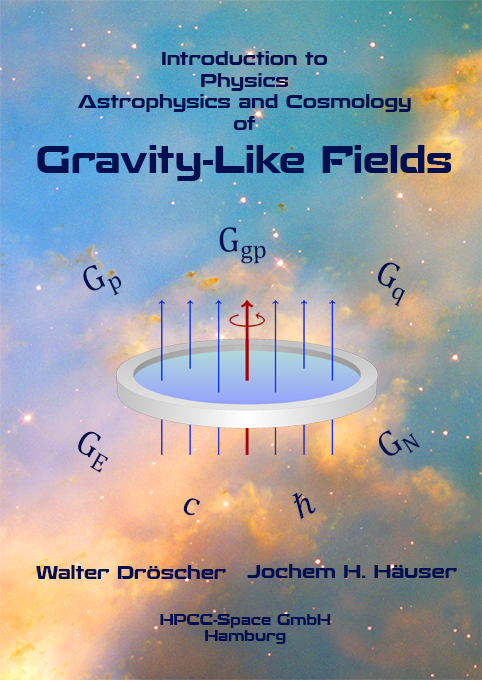 Introduction to Physics, Astrophysics, and Cosmology of Gravity-Like Fields has become available
On 25 November 1915, A. Einstein presented his revolutionary
General theory of Relativity to the Royal Scientific Academy in Berlin that
forever changed our view of the nature of space and time.
In spite of Einstein's dramatic step forward, gravitation is still the most
mysterious force in the Universe. | |
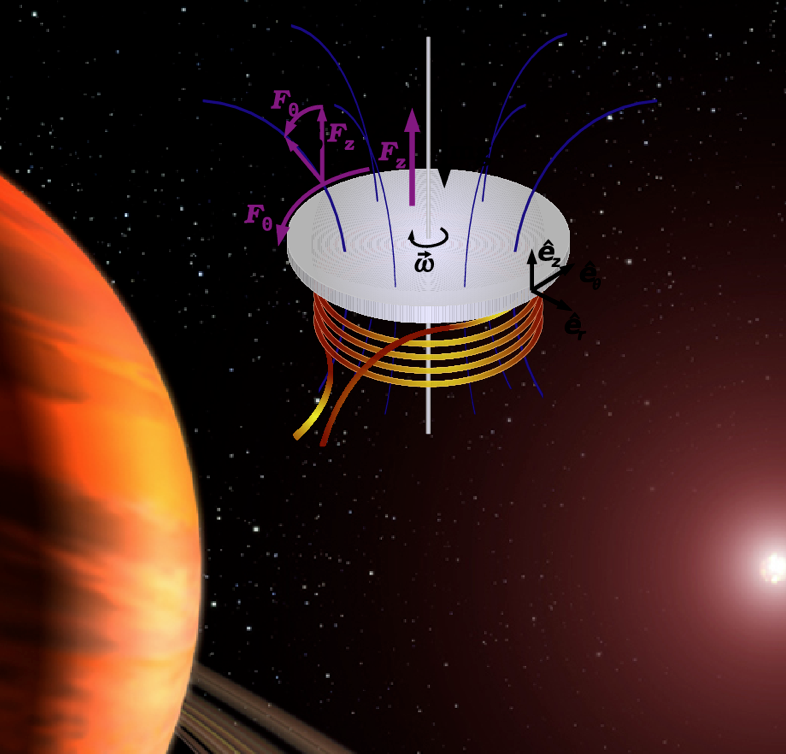 22 November 2014 22 November 2014Interstellar: The physics of Hollywood's blockbuster movie
The movie Interstellar (see also the short report by M. Fontez in La Science & Vie, November 2014)
turned out to be a blockbuster in the U.S. and Europe, and most likely will be so in Asia.
The movie story is great. Without doubt, one of its benefits is the renewed enthusiasm
in the science of space flight by the public. | |
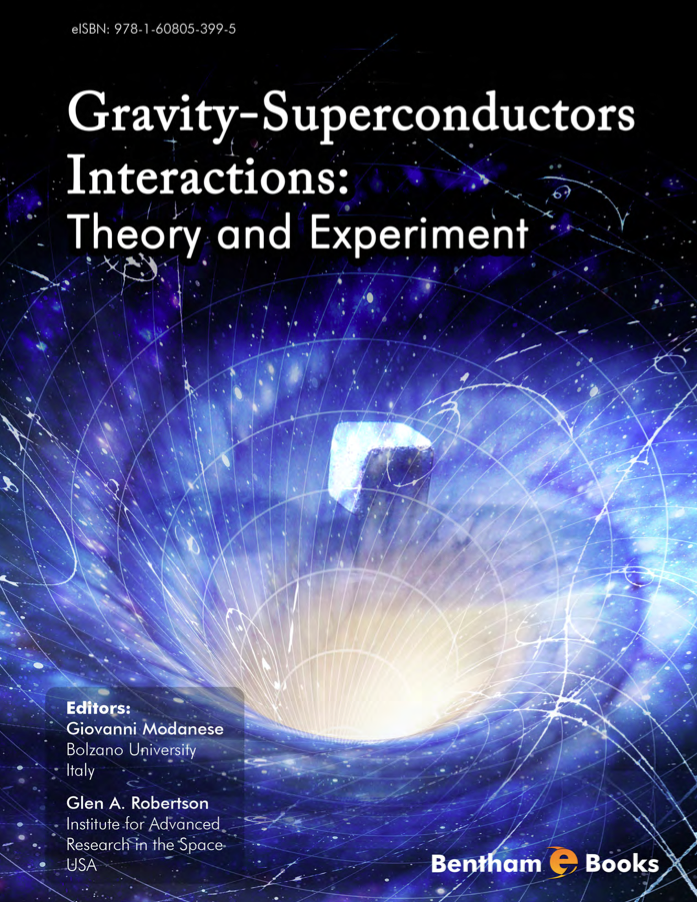 9 November, 2013: Foreword by J. Hauser for: 9 November, 2013: Foreword by J. Hauser for: Gravity Superconductor Interactions: Theory and Experiment
Gravity Superconductor Interactions: Theory and Experiment | |
| Lectures series on Gravity-like Fields available:
A comprehensive lecture series on the | |
| August 2012 Paper AIAA 2012-3915, 23 pp. On the Reality of Gravity-Like Fields
Prof. J. Hauser presented the peer reviewed paper entitled On the Reality Gravity-Like Fields at the
48th AIAA/ASME/SAE/ASEE Joint Propulsion Conference and Exhibit, 29 July - 1 August 2012, Atlanta, GA,
published by the American Institute for Aeronautics and Astronautics. The abstract and the introduction
of the paper can be downloaded here.
The complete paper can be ordered from AIAA (use
aiaa.org website). | |
| July 2012
Gravity-Superconductors Interactions: Theory and Experiment | |
| June 2012
On 19 June. 2012, Prof. J. Hauser gave an invited lecture at the Technical Univ. of Braunschweig
entitled | |
| March 2012
Gravity-Like Fields New Paradigm for Propulsion Science | |
| December 2011
On 15 Dec. 2011, Prof. J. Hauser gave an introduction to the
Physics of Propulsion from Gravity-Like Fields
(shortened version of this presentation can be downloaded here)
at the Institut für Lufttransportsysteme (ILT) of the DLR in Hamburg-Harburg, Germany.
| |
| August 2011 Paper AIAA 2011-6042, 23 pp. Physics of Axial Gravity-Like Fields
Prof. J. Hauser presented the peer reviewed paper entitled Physics of Axial Gravity-Like Fields at the 47th AIAA/ASME/SAE/ASEE Joint Propulsion Conference and Exhibit, 31 July - 3 August 2011, San Diego, CA, published by the American Institute for Aeronautics and Astronautics, and also discussed the current status of the physics of propellantless propulsion and direct energy generation at the meeting of the Technical Committee on Future and Nuclear Flight.
Talks on advanced space propulsion were held with Prof. P. Papadopoulos, San Jose, co-founder of the Silicon Valley Space Center (link). | |
| June 2011 Physics of Extreme Gravitomagnetic and Gravity-Like Fields for Novel Space Propulsion and Energy Generation
This article was published in the journal: International Review of Aerospace Engineering - April 2011 (Vol. 4 N. 2), 15 pp | |
| March 2011 New Book The e-book entitled Gravity 2.0, Design Strategies for a Gravity Modified World (check at www.barnesandnoble.com and amazon.com or www.gravitymodification.com for those who do not have Kindle or Nook ebook readers), was published by Gregory Daigle, former professor of industrial design and practicing designer. In my opinion this book is a very well written non-mathematical introduction to recent extreme gravitomagnetic and gravity-like field experiments and on theoretical ideas postulating six fundamental forces, which includes our own approach termed Extended Heim Theory (EHT). G. Daigle then proceeds to explain the most timely and exciting aspects of gravitational engineering, for instance, possible alternatives for cleaner energy generation as well as transportation in general and, in particular, space propulsion. This book can be recommended to anyone who is interested in novel technologies based on emerging alternative physical concepts of gravity. The contagious enthusiasm of Daigle's exposition is making his topics easily accessible to a wide audience requiring serious information, but he does not fail to instruct the reader that this exciting research is both ambitious and speculative. The table of contents along with the introduction can be downloaded to convey the flavor of Gravity 2.0. | |
| July 2010 Coupled Gravitational Fields A New Paradigm for Propulsion Science
The paper entitled Coupled Gravitational Fields A New Paradigm for Propulsion Science,
was presented at the 46th Joint Propulsion Conference & Exhibit, 26-28 July 2010, Nashville, TN, and published as paper AIAA-2010-NFF-1 by the American Institute for Aeronautics and Astronautics. The paper was given by Len Japngie, Washington, D.C. | |
| February 2010 Emerging Physics for Novel Field Propulsion Science
The paper entitled Emerging Physics for Novel Space Propulsion Science was presented at SPACE,PROPULSION & ENERGY SCIENCES INTERNATIONAL FORUM SPESIF-2010 at John Hopkins University Applied Physics Laboratory, 23-25 February 2010 and published by the American Institute of Physics. | |
| August 2009 Gravitational Field Propulsion
Prof. J. Hauser presented the paper entitled Gravitational Field Propulsion (AIAA 2009-5069, 20 pages)
at the 45th Joint Propulsion Conference, 2-5 August 2009, Denver, CO organized by the American Institute of Aeronautics and Astronautics. | |
| 13 March 2009 Lecture on Emerging Physics for Novel Field Propulsion Dr. Hauser delivered a lecture entitled Emerging Physics for Novel Field Propulsion ( Flyer, LectureTitlePage, LectureSummary) at the Aerospace Museum of California, McClellan, CA on invitation of the American Institute of Aeronautics and Astronautics (AIAA) Sacramento Chapter. EHT (Extended Heim Theory) postulates the existence of six fundamental interactions (three of them of gravitational nature, both attractive and repulsive) as well as the existence of ordinary and non-ordinary matter. NOM particles may be virtual particles of imaginary mass and real charge or particles of negative energy density (generated in pairs) and there may also be neutral leptons (e.g. a neutral tau particle might exist, possible candidate for dark matter particle around 1.8 GeV ?). Interaction field propulsion would be one application for space flight, but the generation of green energy based on the two additional gravity-like fields (as might have been observed in the experiments at ARC, Seibersdorf, Austria by Dr. Tajmar et al.) may be an even more rewarding option. | |
| December 2008 Extended Heim Theory in the Press In the article on Advances in Breakthrough Propulsion Physics, published by the Nuclear and Future Flight Committee of the American Institute of Aeronautics and Astronautics in Aerospace America, December 2008, p. 59, the recent work on Extended Heim Theory (EHT) of W. Dröscher and J. Hauser is briefly described. The picture on p. 59 shows the postulated six fundamental forces. Three of these forces are of gravitational nature and may be both attractive and repulsive. The postulated interaction between electromagnetism and gravitation might be responsible for the strong gravitomagnetic fields as well as gravity-like (acceleration) fields observed at ARC Seibersdorf by Tajmar et al. According to EHT, a vertical gravity-like field (that is acting along the axis of the cryogenic rotating ring or disk) might be producible. If such a field existed, it could be directly usable as a propellantless space propulsion device, but also might be applicable in energy generation, and could aid in the stabilization of fusion plasmas (e.g., magnetic mirror). | |
| 18 November 2008 Simulation and Scientific Computing
Prof. Jochem Hauser presented three invited lectures at the two European meetings
PET08, 1st Peer Training (for young researchers), 21-22 October 2008 and MASCOT08, 8th Meeting on Applied Scientific Computing and Tools, 23-25 October 2008, held at the Instituto per le Applicazioni del Calcolo (IAC)-Centro Nationale di Ricerca (CNR), Viale del Policlinico 137, Roma, Italy. | |
| 30 July 2008 Gravity-Like Fields and Space Propulsion Concepts
Novel paper (AIAA 2008-5124, 19 pages) on field propulsion was presented
at the 44th Joint Propulsion Conference, 20-23 July, Hartford, CT organized
by the American Institute of Aeronautics and Astronautics.
Dr. Häuser also gave a presentation to the Technical Committee for Nuclear
and Future Flight on 20 July. |
|
| 12 March 2008 Field Propulsion in the Press A short column on field propulsion can be found in the December issue of Aerospace America on page 61. It should be noted, although the concept of frame-dragging is used, the effect measured is about 18-20 orders of magnitude larger than the frame-dragging predicted by General Relativity, and thus constitutes a novel physical phenomenon. (pdf) |
|
| 14 January 2008
Comments on the paper by M. Tajmar et. al., |
|
| 4 December 2007 Announcement: Talks by Jean-Marie Muylaert Head, Aerodynamics and Aerothermodynamics Section, European Space Agency, Noordwijk (Netherlands) Tuesday, 4th December 2007
Talk 2: 10:30 - 11:15 Questions and Discussions: 11:15 - 11:30 Location: Gebäude A, Raum A.EG.43 Univ. of Applied Sciences Karl-Scharfenberg-Str. 55-57 38229 Salzgitter-Calbecht Directions: see http://www.fh-wolfenbuettel.de/cms/de/service/download/sz.pdf Contact: Prof. Dr. J. Häuser jh@hpcc-space.de Tel.: (+49)5341-875-450 (201) |
|
| 02 October 2007 Horizon of Space Propulsion Gravity-Like Fields for Space Propulsion in a Nutshell During the last 18 months substantial progress has been made in the
generation of gravity-like fields. The experiments by M. Tajmar, first announced on ESA's webpage on 23
March 2006, have lead to a paradigm-shift whose key elements seem to be based on
condensed matter phenomena. In order to answer numerous e-mails that posed similar questions and to clarify some misconceptions, check the text below as well as the Nutshell Summary attached. We regret, but it is not always possible to answer all e-mail messages personally because of time constraints. The Nutshell article gives a summary in non-mathematical form of the current experimental and theoretical state of the art in the research of novel gravity-like fields (also noted as artificial gravitational fields). These fields are of particular interest in (space) transportation, because they could serve as enabling technology for a completely different transportation principle. In addition, ground transportation might not need wheels anymore. This article was also written on the request of the chairman of the Committee of Nuclear and Future Flight Propulsion (NPFF) of the American Institute of Aeronautics and Astronautics (AIAA), and was sent to committee members on 31 August 2007. The Nutshell article aims to clarify the relationship between the experiments of the group of M. Tajmar, ARC Seibersdorf, Austria, and the recent set of experiments of R. D. Graham et al., University of Canterbury,Christchurch, New Zealand. It is a misconception to assume that there is a contradiction between these two sets of experiments! Their papers need to be read completely, not only the introduction! In both cases a gravitomagnetic field was measured, about 30 orders of magnitude higher than predicted by the Lense-Thirring effect of general relativity. Although the term super frame dragging is used in these papers, it is a misunderstanding to attribute the experimental results to the phenomenon of frame dragging! The denotation super frame dragging needs to be understood in its historic context, because, when experiments began in 2003 at ARC, it was believed that the concept of frame dragging could be utilized to explain results. Since the phenomena observed are about 30 orders of magnitude higher, they are clearly outside general relativity, and cannot be explained by frame dragging. It should be noted that there is also a third experiment, namely the NASA-Stanford Gravity Probe B experiment, which deserves to be investigated. In this experiment two pairs of niobium coated superconducting rotating quartz spheres (gyros, 38mm diameter) are used. If the effects measured by Tajmar and Graham are real, a spin-spin interaction between two rotating gyros should have led to a large (compared to frame dragging) spin drift. The Nutshell article also describes theoretical (http://www.hpcc-space.de/publications ) physical models, utilized to compute the observed effects and to describe the (novel) physics behind these phenomena. |
|
| 12 September 2007 10 th Numerical Grid Generation Conference, 16-20 September, FORTH, Crete
This is the final conference program for the 10 th Numerical Grid
Generation Conference, 16-20 September 2007, FORTH Crete, Greece
This is now the 10 th Numerical Grid Generation Conference, co-organized
by Prof. Häuser which was started by him in 1985. |
|
| 8 August 2007 Gravity-like Fields: Experimental Facts and Theoretical Explanation
In two recent papers M. Tajmar et al., ARC Seibersdorf , Austria (27
July, 2007, http://arxiv.org/abs/0707.3806) and R.D. Graham et al. (6
July 2007,
www2.phys.canterbury.ac.nz/~physrin/papers/SuperFrameDragging2007.pdf)
University of Canterbury, Christchurch, New Zealand have reported
measuring artificial gravitational fields (AGF), generated by a rotating
superconducting niobium ring and lead disk, respectively. The effect
occurred, when the ring or disk were subjected to angular acceleration.
Since measured signals were about 30 orders of magnitude larger than
predicted from the frame dragging effect of general relativity (GR,
Lense-Thirring 1918, see also Gravity Probe B experiment), GR cannot be
used to explain these experiments. The AGF had rotational character,
pointing in the circumferential direction of the ring or disk. A
theoretical explanation is given in our recent AIAA 2007-5595 paper (8
July 2007). Our theory is termed Extended Heim Theory (EHT), since
the geometrization principle of the late German physicist B. Heim (1952,
the Italian mathematician B. Finzi suggested a similar principle in
1955) is employed. EHT leads to six fundamental forces in Nature.
Moreover, as outlined in the paper, according to EHT, a modified
experiment should result in an AGF directed along the axis of rotation,
while the disk is rotating at constant speed. If this proposition turns
out to be true, a revolutionary space propulsion technology could be
possible. Furthermore, the field of transportation in general would be
changed dramatically. However, before
any final conclusions can be drawn, substantial additional research in
both experiment and theory is needed. |
|
| 29 June 2007 As co-chairman of the 10th ISGG Grid generation Conference on Numerical Grid Generation, September 16-20, FORTH, Crete, Greece you are encouraged to attend this event. In case you wish to submit an abstract, please send it directly to Prof. Jochem Hauser, jh@hpcc-space.de, by 21 July 2007. |
|
| 28 May 2007 Article from 15 May 2007 in Die Zeit: Das Ende der Schwere (The End of Gravity) In its 15 May 2007 issue the well known German weekly paper Die Zeit published an article (http://images.zeit.de/text/2007/21/T-Antigravitation) entitled Das Ende der Schwere (The End of Gravity) reporting about the recent experiments by Dr. M. Tajmar and his colleagues, ARC Seibersdorf, Austria on the generation of artificial gravitational fields (AGF). We would like to point out that this article contains the same two misconceptions as the previous article published by the magazine PM, see our remarks from 20 March. We believe that there is a good chance that Dr. M. Tajmar (an excellent experimenter and serious scientist) and his colleagues are correct, having actually produced AGFs, also termed gravito-magnetic field (GMF), in the laboratory. In contrast, the work by Podkletnov, who is also mentioned in the Zeit article, has no credibility at all.
The Zeit article, however, misses the point on two aspects. Since 2002 we published several papers on a theory termed Extended Heim Theory (EHT) that predicts six fundamental forces in Nature (two additional gravitational interactions that may be responsible for dark matter and dark energy). EHT was used to analyze Dr. Tajmar's experiments, and good agreement between EHT and experiment was obtained (see our note from 23 April). Moreover, EHT provides additional guidelines for a so called gravito-magnetic space propulsion experiment. If EHT is correct, the AGF generated in this experiment would be directed along the axis of rotation of the disk or ring rotating with constant angular frequency. If this experiment turns out to be true, then it would be justified to write about The End of Gravity. Text as pdf |
|
| 23 April 2007 Invited Paper: 7th Launcher Symposium
Prof. J. Hauser presented an invited paper on the
Current Status of Gravito-Electromagnetic
Research (This version of paper O-42 has been slightly corrected
with regard to the submitted one) at the 7th Launcher Symposium in Barcelona, Spain, 2-5
April 2007. The paper number is O-42, 18 pages.
The paper presents both recent theoretical and experimental results in
the novel area of propulsion research termed
gravito-magnetic field propulsion comprising the generation of
artificial gravitational fields that could lead to propellant- less
propulsion technology. |
|
| 20 March 2007 Antigravitation: Artificial Gravitational Fields?
In its March 2007 issue the popular German magazine P.M. published an article on the experimental generation of
artificial gravitational fields. The experiments
were conducted by Dr. Martin Tajmar (URL Tajmar) and his
colleagues at the Austrian Research Center in Seibersdorf , close
to Vienna. |
|
| 5 January 2007
Preprint of peer reviewed paper AIAA-2007-1112 to be presented at 45th
American Institute of Aeronautics and Astronautics (AIAA),
Aerospace Sciences Meeting and Exhibit, 8 - 11 Jan 2007, Reno,
NV, USA. The paper describes the integration of an Euler solver
and MHD solver with the JUST (Java Ultra Simulator Technology)
multi-physics platform and shows 2D and 3D results for
multi-block domains. |
|
| News and Publications in 2006/2005 |